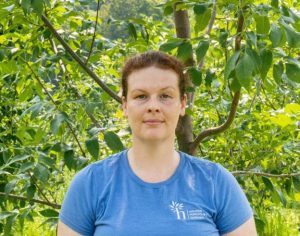Eastern hemlock, Tsuga canadensis, play an important role in the forests they inhabit by creating a microclimatic variation useful for multiple animal species. The hemlock woolly adelgid (HWA) is a small invasive pest that has caused massive hemlock population decline along the eastern United States. The Great Lakes Region is a part of the hemlocks western range and has had HWA extend into the region since 2010. In this presentation we will cover what actions are taking place to help reduce HWA spread, research involved in HWA resistance and how you can help with HWA detection.

How You Can Support a Healthy Hemlock Forest
Webcast Video
Guests

Rachel Kappler
Holden Forests & Gardens
Forest Health Collaborative Coordinator
Rachel Kappler is the liaison between partners of the Great Lakes Basin Forest Health Collaborative. She hosts workshops, webinars, trainings for partners to help achieve
their forest health goals. In addition, she helps facilitate partners tree activities for pest-resistance breeding in our current priority species, ash, beech, and eastern hemlock.
Previously her work was focused on research related to the ecological interactions within the ash-EAB forest ecosystem and ash restoration efforts.